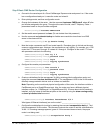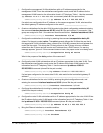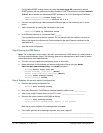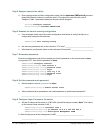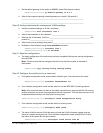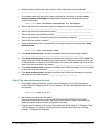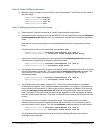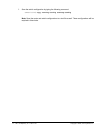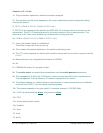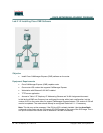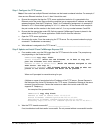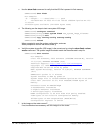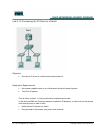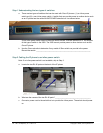
18 - 165 IP Telephony v1.0 Lab 2.1.1b Copyright © 2005, Cisco Systems, Inc.
Answers to 2.1.1b lab
1a. The pod number depends on what the instructor assigned.
2h. The interfaces on the router depends on the router model and physical configuration being
used by the student.
2j. 10.X.0.1 (Pod1 is 10.1.0.1; Pod2 is 10.2.0.1, etc.)
2l. DOT1Q is the parameter that specifies the IEEE 802.1Q trunking protocol to be used on the
subinterface. The 802.1Q trunking protocol is the most commonly used trunking protocol. The
alternative is ISL. Note many switches do not have both trunking protocols.
2m.
10.X0.0.1 (Pod1 is 10.1.0.1; Pod2 is 10.2.0.1, etc.)
2u. Yes or the student needs to troubleshoot.
The status is supposed to be up and up.
4b. The number of interfaces depends on the switch model being used.
4c. The VTY values depends on which switch model is being used, but a common response will be
5 or 15.
4e. Because there is no configuration file located in NVRAM.
6b. No.
6c. CMESwitchX where X is the pod number.
8b. The enable secret command takes precedence over the enable password command.
9b. The management VLAN is the VLAN that is used to access the switch from a remote device.
The management VLAN is where an IP address is assigned to the switch.
9d. The default gateway on a switch allows an administrator to reach remote devices on different
networks from VLAN 1 from the switch command prompt.
10b. The answer depends on the type switch. A common answer is 1,000,000 Kbits.
10c. VLAN1 is administratively down
, line protocol is down.
10d. FIFO
12e. access and dynamic modes
12g. Enabled
12h. trunk
12i. trunk
12j. dot1q



